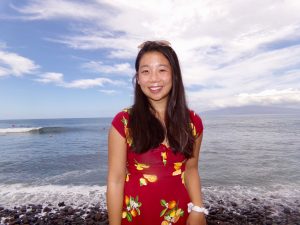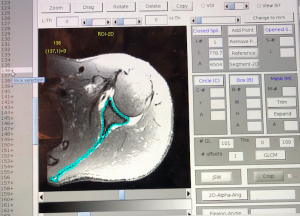This is part of series of posts by recipients of the 2019 Career Services Summer Funding Grant. We’ve asked funding recipients to reflect on their summer experiences and talk about the industries in which they spent their summer. You can read the entire series here.
This entry is by Victoria Wong, COL ’21

Every pre-med student is told that research is a must for medical school applications. However, research is a such broad term—it can range from extracting frog oocytes at a wet lab bench to phenotyping a DNA sequence to analyzing clinical data from real patients. Because of this, finding a summer project that appealed to my specific interests within the biomedical field was of upmost importance. As a collegiate swimmer, I decided to use athletics as my starting point in looking for research opportunities. I was lucky to be offered an incredible position at the University of California, San Francisco Orthopaedic Institute and work with world class sports medicine physicians. This position not only solidified my passion for medicine, but also provided me with hands-on clinical experience, and I’m grateful for Career Service’s financial support in this process.
I spent the majority of my time at UCSF conducting a research project that involves shoulder imaging and 3D bone reconstruction. Scapula bone shape is associated with many shoulder diseases such as instability, rotator cuff injury or osteoarthritis. To assess these conditions, physicians usually order MRIs to evaluate the soft tissue and CT scans to evaluate bone loss. Due to the biophysics of how these images are created, MRIs show great detail of the cartilage and tendons, but not the bones, and CT scans do the opposite.

Furthermore, CT scans use ionizing radiation, which can pose a risk for cancer, and ordering two separate biomedical images can be inconvenient for the patient. Given this issue, the purpose of my research project is to utilize machine learning to extract bone images from MRIs and compare it to the “gold standard” of 3D CT scans. The long term goal is to promote more research in this area and improve machine learning to potentially eliminate the use of CT.
I collaborated closely with both the sports medicine doctors and the computer scientists from the Center for Intelligent Learning at UCSF. Additionally, I learned a lot about the research process, such as how to find and cite scientific literature, communicate data, and write abstracts for journals or conferences.
In addition to my work on shoulder imaging, I also gained clinical experience through shadowing the doctors. I met patients and learned about the process of diagnosing symptoms, ordering tests, and treating an injury. In the operating room, I observed several surgeries including total shoulder replacement, ACL reconstruction, and arthroscopic stabilizations. I have a behind-the-scenes understanding of how medical centers function and how each staff member’s role is vital in providing the best patient care. UCSF is also a teaching institution, so I learned about the different stages of a medical education through interactions with medical students, residents and fellows.
Overall, the information and experience that I gained this summer is invaluable. I have a true understanding of the life of a doctor and am now more excited than ever to pursue my medical career.





